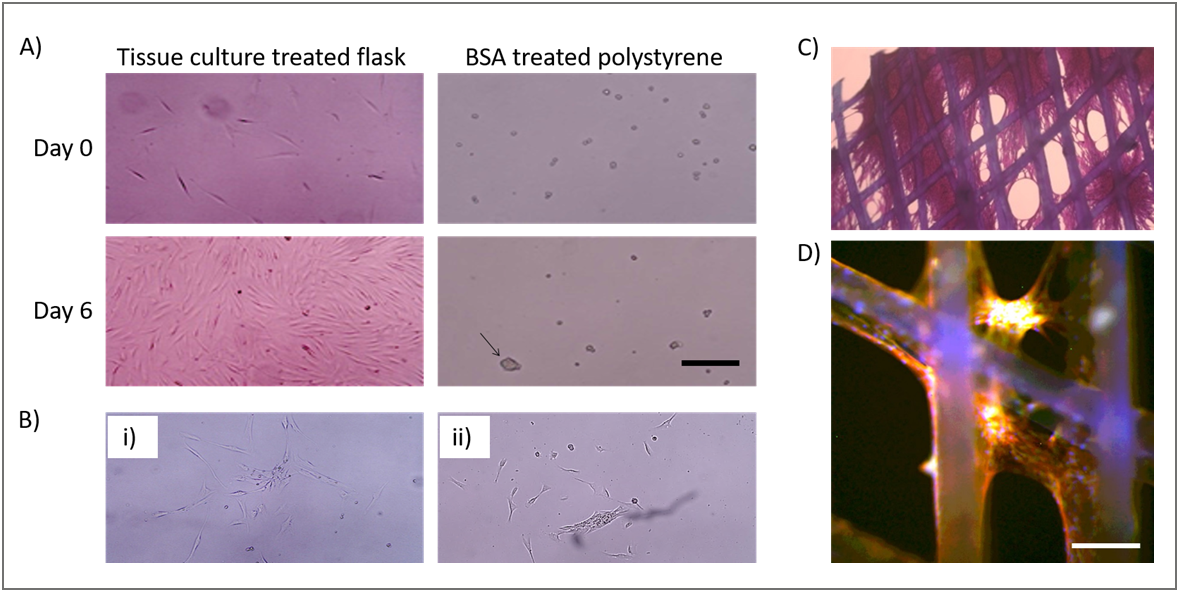Melt Electro Writing Scaffolds seeded with Stem Cells:
Melt Electro Writing (MEW) allows to create much smaller pores compared to syringe powered extrusion. Smaller pores are supposed to offer better conditions for cell proliferation.
Our customers at University of Otago, Dunedin, NZ, used thin (3…4 layers) MEW scaffolds from PCL 50,000. Mesenchymal stem cells (T0523) were seeded on circular MEW (cMEW) discs as defined growth starting points sandwiched between two test template scaffolds investigated at varying pore sizes (250…400µm). The authors developed a special observation/ cell counting technique to monitor cell proliferation between opaque PCL scaffolds.
It turned out that smaller pores are supportive for cell growth on MEW structures.

Seeding cMEW scaffolds:
(A) Polystyrene culture vessels were either tissue culture treated or untreated and were coated or not coated with 0.1% BSA in PBS overnight before addition of T0523 cell, arrow points to 90 mm spheroid.
(B) Spheroid viability (i) T0523 spheroids transferred from A (iii) to tissue culture-treated flask; (ii) T0523 cells from A (iv) to tissue culture-treated flask.
(C) cMEW fixed and stained with SRB. Cells can be seen coating scaffold and filling pores.
(D) Fluorescent image of T0523 cells attached to cMEW scaffold. Green = GFP, Red = phalloidin conjugated to Alexa Fluor 594, Blue = Hoechst 33342. (A–C) Scale bar = 250 µm. (D) Scale bar = 100 µm.
References:
[1] Paul R. Turner, Minami Yoshida, M. Azam Ali and Jaydee D. Cabral: Melt Electrowritten Sandwich Scaffold Technique Using Sulforhodamine B to Monitor Stem Cell Behavior, TISSUE ENGINEERING: Part C, Volume 26, Number 10, 2020For further information:
Dr. Jaydee Cabral, Senior Lecturer, Centre for Bioengineering & Nanomedicine (Dunedin Hub), University of Otago, Dunedin, NZ
